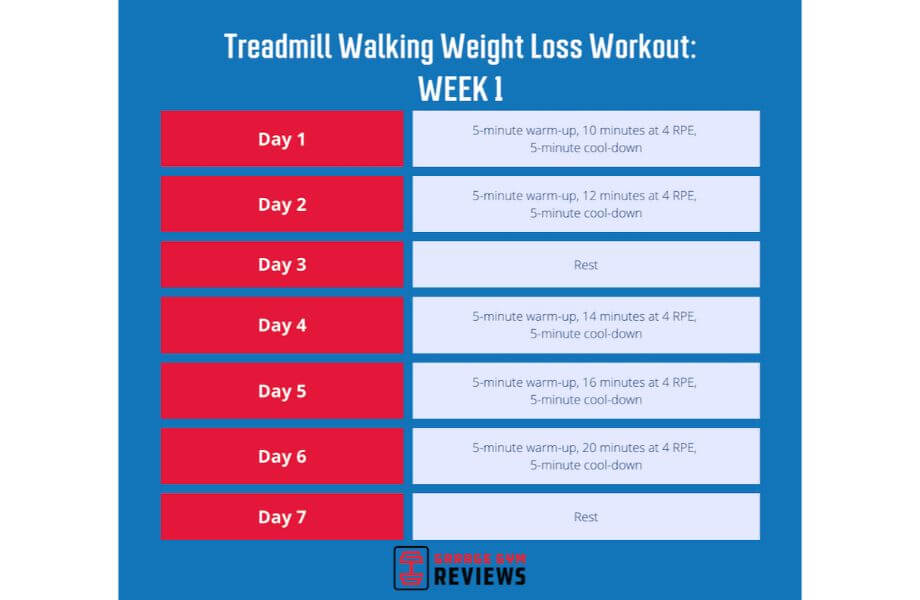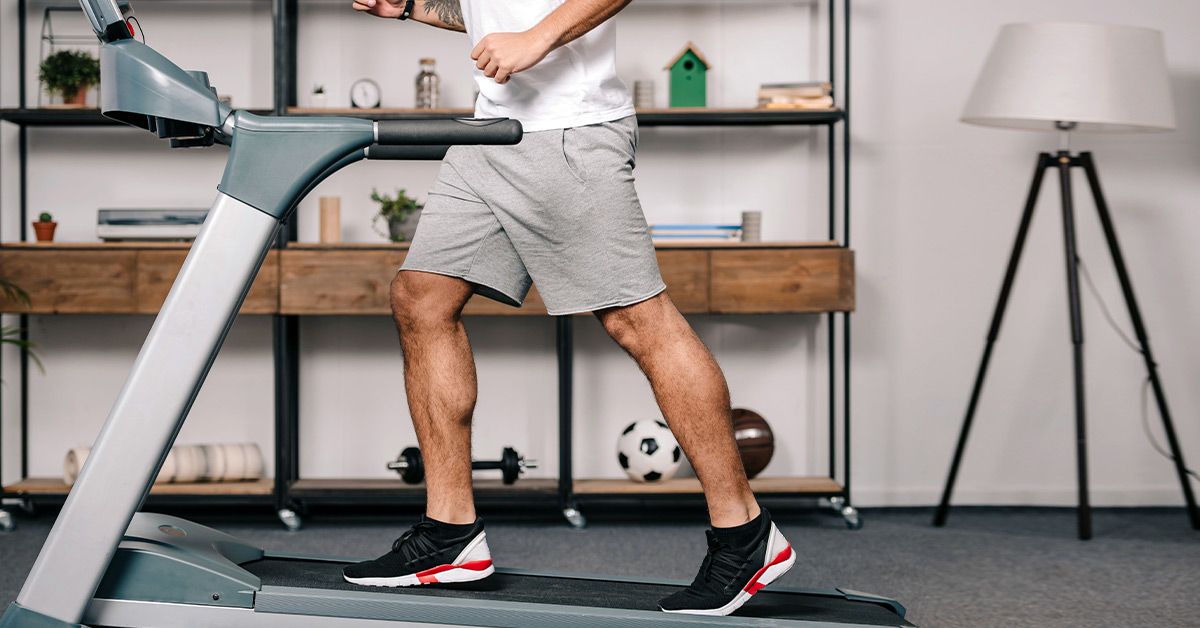Looking to lose weight without running? Discover effective strategies and tips for losing weight by walking on a treadmill in this informative post.
If you’re looking to shed those extra pounds but aren’t a fan of running, you may be pleased to know that you can still achieve your weight loss goals by simply walking on a treadmill. Walking is a low-impact exercise that can be easily incorporated into your daily routine, and when done correctly, can be an effective way to burn calories and shed unwanted weight. In this article, you will discover key strategies and tips on how to lose weight walking on a treadmill without the need for running. Whether you’re a beginner or a seasoned fitness enthusiast, these techniques will help you maximize your workout and reach your desired weight loss goals.

Choosing the right treadmill
Consider the features
When choosing a treadmill, it is essential to consider the features that will best suit your fitness needs. Look for a treadmill that offers various workout programs and intensity levels to challenge you and keep you motivated. Additionally, check for features such as heart rate monitors, incline options, and built-in speakers or entertainment systems.
Determine the ideal size and weight capacity
It is vital to select a treadmill that accommodates your size and weight. Consider your height and stride length when choosing the size of the treadmill belt. Ensure that the treadmill has a weight capacity that can support your weight comfortably, providing stability and safety during your workouts.
Check the warranty
Before purchasing a treadmill, it is crucial to check the warranty provided by the manufacturer. A longer warranty period indicates that the manufacturer has confidence in the quality and durability of their product. Look for warranties that cover both the motor and other components to protect your investment.
Read reviews and ratings
To make an informed decision, read reviews and ratings of different treadmill models. Take note of the feedback from other users regarding the treadmill’s performance, durability, and ease of use. This information can provide valuable insights into the reliability and functionality of the treadmill you are considering.
Setting realistic goals
Consult with a healthcare professional
Before starting any weight loss journey, it is advisable to consult with a healthcare professional, such as a doctor or a registered dietitian. They can assess your overall health, discuss any underlying medical conditions, and provide personalized advice based on your specific needs and goals.
Determine your current fitness level
Assessing your current fitness level is essential in determining the appropriate starting point for your treadmill walking routine. Consider factors such as your cardiovascular endurance, strength, and flexibility. This evaluation will help you set realistic goals and tailor your workout routine to your current capabilities.
Set achievable weight loss goals
When setting weight loss goals, it is crucial to make sure they are attainable and maintainable. Aim to lose a realistic amount of weight per week, such as 1-2 pounds, rather than setting unrealistic expectations. This gradual and sustainable approach will not only be healthier but also more likely to lead to long-term success.
Establish a timeline
Creating a timeline for your weight loss goals can provide structure and motivation. Be sure to set specific milestones along the way to track your progress. However, remember that weight loss is a journey, and it is essential to focus on overall health and wellness rather than solely on the number on the scale.

Creating a calorie deficit
Understand the concept of calorie deficit
To lose weight, it is necessary to create a calorie deficit. This means consuming fewer calories than your body needs to maintain its current weight. By consistently maintaining a calorie deficit, you can encourage your body to burn stored fat for energy, leading to weight loss over time.
Calculate your daily caloric needs
To determine your daily caloric needs, you can use an online calculator or consult with a registered dietitian. Factors such as age, gender, height, weight, activity level, and weight loss goals will be taken into account. Once you have your daily caloric needs, you can adjust your intake accordingly to create a calorie deficit.
Track your daily caloric intake
To effectively create and maintain a calorie deficit, it is crucial to track your daily caloric intake. Keep a food diary or use a smartphone app that allows you to log your meals and snacks. This way, you can monitor your consumption and make adjustments as needed to stay within your calorie target.
Combine dietary changes and treadmill walking
Creating a calorie deficit solely through diet can be challenging and may not be sustainable in the long run. By incorporating treadmill walking into your weight loss plan, you can increase your daily calorie burn and create a larger calorie deficit. Additionally, the combination of exercise and dietary changes can lead to better overall health and improved fitness.
Designing your treadmill walking routine
Start with a warm-up
Before each treadmill walking session, it is essential to start with a proper warm-up. Spend a few minutes walking at a slow pace to gradually increase your heart rate and warm up your muscles. This will prepare your body for the more intense exercise to come and reduce the risk of injury.
Choose an appropriate speed
When designing your treadmill walking routine, it is important to choose an appropriate walking speed. This will vary depending on your fitness level and goals. Start at a comfortable pace that allows you to maintain good form and gradually increase the speed as your fitness improves.
Incorporate incline variations
Incorporating incline variations into your treadmill walking routine can provide additional challenges and increase the intensity of your workout. Walking uphill engages different muscle groups and increases the calorie burn. Start with a gentle incline and gradually increase the incline over time as your strength and endurance improve.
Consider interval training
Interval training involves alternating periods of high-intensity exercise with periods of lower intensity or rest. Incorporating interval training into your treadmill walking routine can help you burn more calories and improve cardiovascular fitness. For example, alternate between walking at a moderate pace and walking at a faster pace or jogging for set intervals.

Maintaining proper form
Engage your core muscles
To optimize your treadmill walking workout and prevent muscle imbalances or injuries, it is important to engage your core muscles. Imagine drawing your belly button toward your spine and maintaining a stable and strong core throughout your workout. This will help improve your posture and overall body alignment.
Keep your posture aligned
Maintaining proper posture while walking on the treadmill is key to preventing unnecessary strain on your body. Keep your head up, shoulders relaxed, and back straight. Avoid leaning forward or hunching over the handrails, as this can lead to poor form and potential injuries.
Avoid holding onto the handrails
While it may be tempting to hold onto the handrails for stability, it is best to avoid relying on them excessively. Holding onto the handrails can alter your walking form and decrease the engagement of your core muscles. Gradually reduce your reliance on the handrails as your balance and stability improve.
Maintain a natural stride
When walking on the treadmill, aim for a natural stride that mimics your regular walking gait. Take comfortable steps, heel to toe, and avoid overstriding or taking abnormally short steps. Maintain a smooth and rhythmic pace to optimize your workout and reduce the risk of strain or injury.
Increasing intensity over time
Gradually increase speed and incline
As your fitness level improves, it is important to gradually increase the speed and incline of your treadmill walking routine. This progressive overload will challenge your body and prevent plateaus. However, it is crucial to listen to your body and avoid pushing yourself too hard too quickly, as this can lead to injuries.
Extend your workout duration
To continue challenging yourself and burning more calories, gradually increase the duration of your treadmill walking workouts. Start with a comfortable duration and add a few minutes to each session as you progress. Aim for at least 150 minutes of moderate-intensity treadmill walking per week, as recommended by the American College of Sports Medicine.
Incorporate different walking techniques
To further enhance the effectiveness of your treadmill walking routine, consider incorporating different walking techniques. For example, try power walking, where you push off with more force and take longer strides, or incorporate walking lunges or side steps to engage different muscle groups.
Explore other treadmill features
Many treadmills offer additional features such as interval programs, virtual scenic routes, or built-in workouts. Take advantage of these features to add variety and excitement to your treadmill walking routine. Exploring different programs and settings can help keep you motivated and engaged in your workouts.

Monitoring your progress
Keep track of weight loss milestones
Tracking your weight loss milestones can help you stay motivated and measure your progress. Set specific weight loss goals and celebrate when you achieve them. Keep a record of your weight and track your progress over time to see how far you have come.
Measure inches and body fat percentage
While weight is a useful measure, it does not always paint the whole picture. Measuring inches lost and tracking changes in body fat percentage can provide a more accurate reflection of your progress. Often, as you build muscle through treadmill walking, your body composition will change even if the scale doesn’t show significant weight loss.
Monitor changes in fitness level
As you continue your treadmill walking routine, pay attention to improvements in your overall fitness level. Notice if you can walk at a faster pace, maintain higher inclines, or walk for longer durations without feeling overly fatigued. These improvements indicate that you are becoming fitter and stronger.
Record your achievements
Keeping a record of your achievements can boost your motivation and provide a sense of accomplishment. Create a workout journal or use a tracking app to document your treadmill walking sessions, including details such as duration, distance, calories burned, and perceived exertion. Reviewing your progress can help you stay motivated and set new goals.
Overcoming plateaus
Vary your walking routine
If you find yourself hitting a weight loss plateau or feeling stuck in your progress, it may be time to shake up your treadmill walking routine. Incorporate different intensity levels, inclines, or walking techniques. Try adding intervals of higher intensity or incorporating strength training exercises between walking intervals. By challenging your body in new ways, you can break through plateaus and continue progressing toward your goals.
Incorporate strength training
Strength training can play a significant role in weight loss and overall fitness. By incorporating resistance exercises into your routine, you can build lean muscle, which helps increase your metabolism and burn more calories throughout the day. Add strength training exercises that target major muscle groups to your weekly schedule, alternating them with your treadmill walking sessions.
Try other forms of cardio exercise
If you feel like you’ve reached a plateau with your treadmill walking, it may be beneficial to try other forms of cardio exercise. Experiment with activities such as cycling, swimming, or group fitness classes to challenge your body in different ways. Cross-training can help prevent boredom and stimulate new adaptations that support weight loss.
Modify your diet
If you have exhausted other options and are still experiencing difficulty in reaching your weight loss goals, consider evaluating and modifying your diet. Look for areas where you can make healthier choices, such as reducing portion sizes, increasing your intake of fruits and vegetables, and choosing lean protein sources. Consulting with a registered dietitian can provide personalized guidance and support in making sustainable changes to your eating habits.

Staying motivated
Set mini goals and reward yourself
Setting mini goals along your weight loss journey can keep you motivated and provide a sense of accomplishment along the way. Break your overall goal into smaller milestones that are achievable within a shorter timeframe. When you reach these milestones, reward yourself with non-food rewards, such as buying yourself a new workout outfit or treating yourself to a relaxing massage.
Find a workout buddy
Exercising with a friend or family member can make your treadmill walking routine more enjoyable and help keep you accountable. Having a workout buddy provides companionship, support, and the opportunity to challenge each other to push further. Choose someone who shares similar fitness goals and schedules and make a commitment to walk together regularly.
Listen to motivation podcasts or music
Listening to motivation podcasts or upbeat music can be a powerful tool to keep you motivated during your treadmill walking sessions. Find podcasts or playlists that inspire and energize you, helping you maintain focus and drive. Having something enjoyable to listen to can make the time pass more quickly and make your workouts more enjoyable.
Change up your workout environment
If you find yourself getting bored or feeling unmotivated with your treadmill walking routine, consider changing up your workout environment. Explore different locations to walk, such as outdoor trails, parks, or indoor tracks. Changing your scenery can rejuvenate your excitement for exercise and provide a refreshing change of pace.
Incorporating lifestyle changes
Make simple changes in daily activities
Incorporating more movement into your daily activities can help support your weight loss efforts. Look for simple ways to be more active throughout the day, such as taking the stairs instead of the elevator, parking farther away from your destination, or walking during phone calls. These small changes can add up and contribute to your overall calorie burn.
Reduce sedentary behavior
Sedentary behavior, such as sitting for long periods, can negatively impact your weight loss efforts. Look for opportunities to reduce sedentary behavior by incorporating movement breaks throughout the day. Set reminders to stand up, stretch, or take short walks at regular intervals. These breaks can help counteract the negative effects of sedentary behavior and boost your overall calorie expenditure.
Include more movement throughout the day
In addition to scheduled treadmill walking sessions, find ways to incorporate more movement throughout your day. Engage in activities you enjoy, such as dancing, gardening, or playing with your children or pets. These activities not only contribute to your overall calorie burn but also promote a healthy and active lifestyle.
Prioritize sleep and stress management
Getting enough sleep and effectively managing stress are crucial components of a successful weight loss journey. Aim for 7-9 hours of quality sleep each night to support your body’s natural repair and recovery processes. Practice stress-management techniques such as deep breathing exercises, meditation, or engaging in hobbies you enjoy to reduce stress levels. When your body is well-rested and your mind is calm, you will have the energy and mental clarity to stay focused on your fitness goals.
In conclusion, losing weight through treadmill walking without running can be an effective and sustainable approach for achieving your weight loss goals. By choosing the right treadmill, setting realistic goals, creating a calorie deficit, designing a walking routine, maintaining proper form, increasing intensity over time, monitoring your progress, overcoming plateaus, staying motivated, and incorporating lifestyle changes, you can make significant progress on your weight loss journey. Remember to consult with healthcare professionals, track your progress, and listen to your body to ensure a safe and successful experience.
